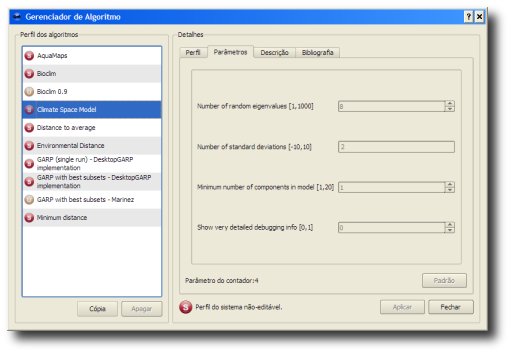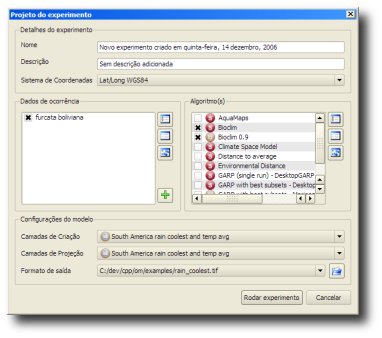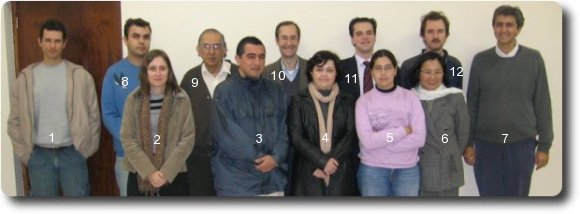An
article was recently published in
Ecological Modelling describing procedures used to model Pine forest distribution in Spain. The authors used Grass and R to carry out the modelling process. openModeller was not used but the article is still interesting for those involved in ecological niche modelling. The complete article is available for download as a
pdf document .
Abstract:
"We present a modelling framework for predicting forest areas. The framework is obtained by integrating a machine learning software suite within the GRASS Geographical Information System (GIS) and by providing additional methods for predictive habitat modelling. Three machine learning techniques (Tree-Based Classification, Neural Networks and Random Forest) are available in parallel for modelling from climatic and topographic variables. Model evaluation and parameter selection are measured by sensitivity-specificity ROC analysis, while the final presence and absence maps are obtained through maximisation of the kappa statistic. The modelling framework is applied at a resolution of 1 km with Iberian subpopulations of Pinus sylvestris L. forests. For this data set, the most accurate algorithm is Breiman's random forest, an ensemble method which provides automatic combination of tree-classifiers trained on bootstrapped subsamples and randomised variable sets. All models show a potential area of P. sylvestris for the Iberian Peninsula which is larger than the present one, a result corroborated by regional pollen analyses."
Bibtex Citation:
@article{Benito2006_pred_habitat_pinus,
abstract = {We present a modelling framework for predicting forest areas. The framework is obtained by integrating a machine learning software suite within the GRASS Geographical Information System (GIS) and by providing additional methods for predictive habitat modelling. Three machine learning techniques (Tree-Based Classification, Neural Networks and Random Forest) are available in parallel for modelling from climatic and topographic variables. Model evaluation and parameter selection are measured by sensitivity-specificity ROC analysis, while the final presence and absence maps are obtained through maximisation of the kappa statistic. The modelling framework is applied at a resolution of 1 km with Iberian subpopulations of Pinus sylvestris L. forests. For this data set, the most accurate algorithm is Breiman's random forest, an ensemble method which provides automatic combination of tree-classifiers trained on bootstrapped subsamples and randomised variable sets. All models show a potential area of P. sylvestris for the Iberian Peninsula which is larger than the present one, a result corroborated by regional pollen analyses.},
author = { and Blazek, Radim and Neteler, Markus and Dios, Rut S. and Ollero, Helios S. and Furlanello, Cesare },
citeulike-article-id = {608546},
doi = {10.1016/j.ecolmodel.2006.03.015},
journal = {Ecological Modelling},
keywords = {ecology gis machine-learning presence-absence-models roc},
month = {August},
number = {3-4},
pages = {383--393},
priority = {2},
title = {Predicting habitat suitability with machine learning models: The potential area of Pinus sylvestris L. in the Iberian Peninsula},
url = {http://www.sciencedirect.com/science/article/B6VBS-4JRVBDK-5/2/6b75f12e4a096f17439ecf5c766c94c1},
volume = {197},
year = {2006}
}






